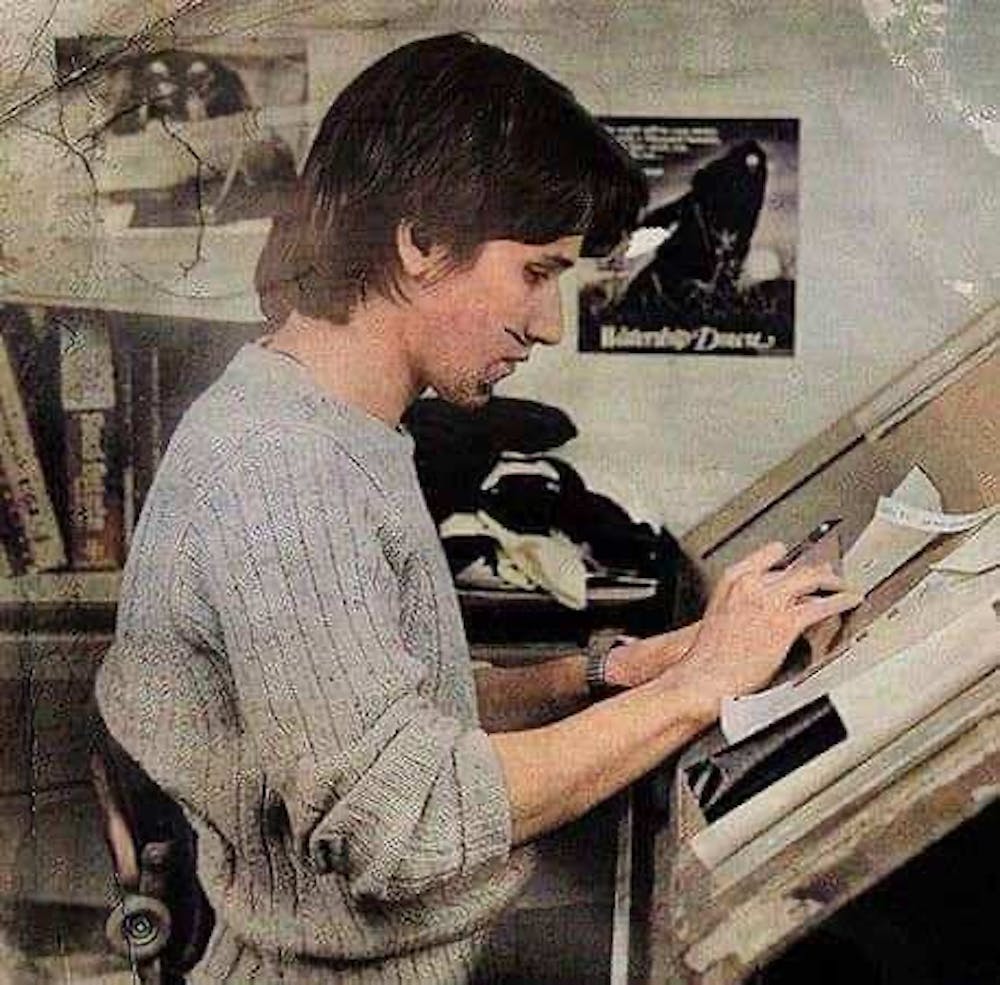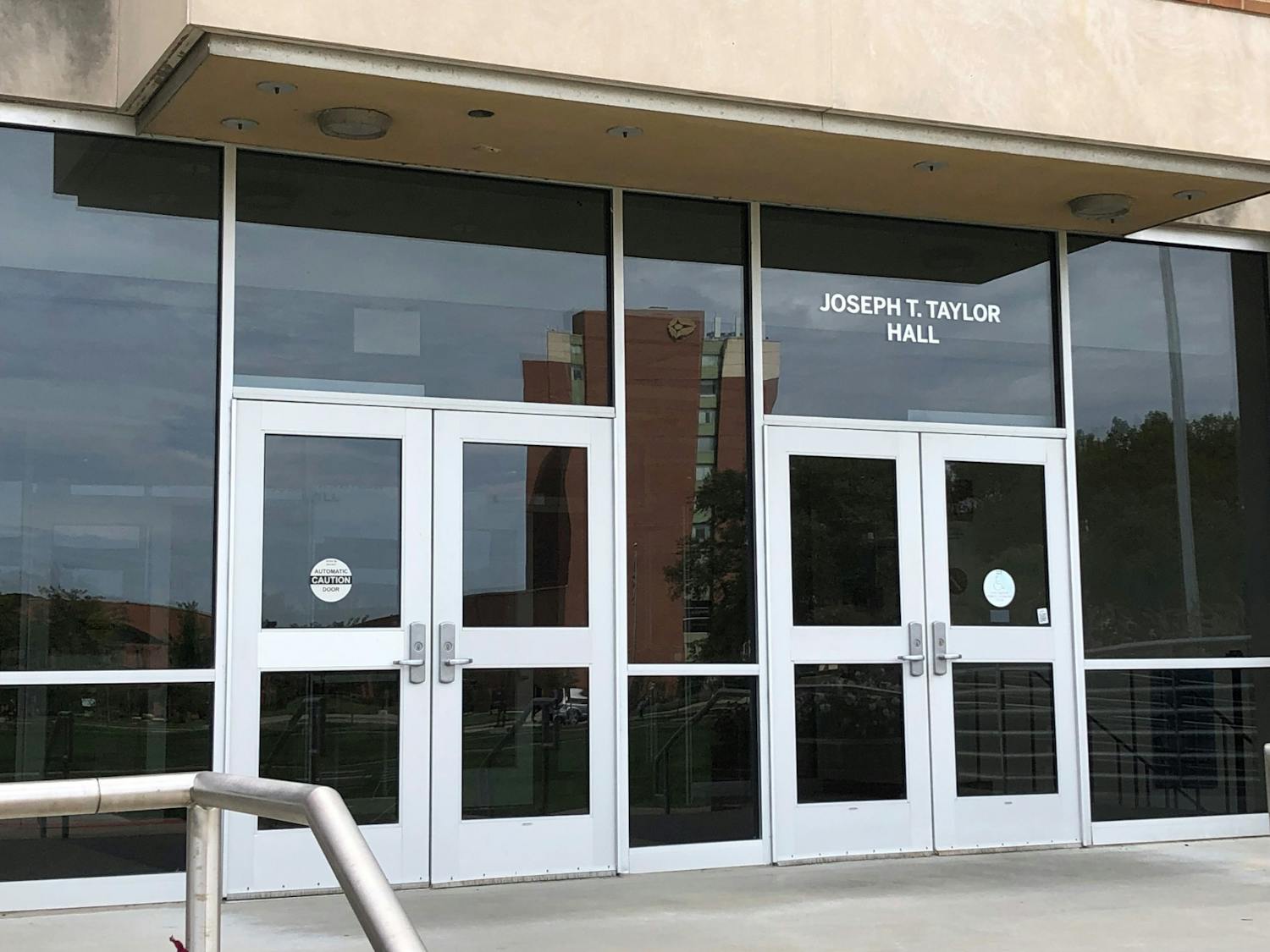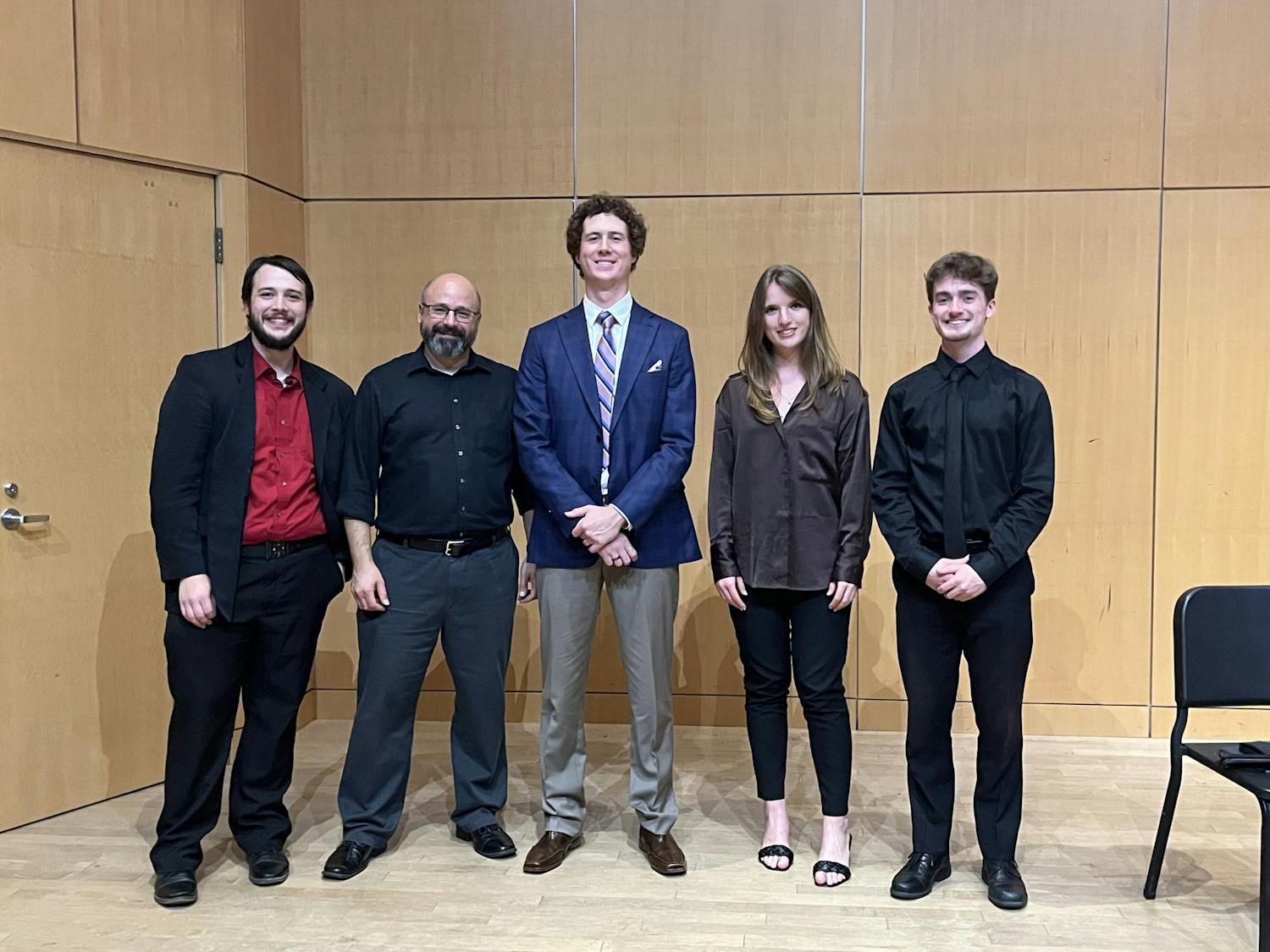The Sagamore, IUPUI’s old student-run news publication, ran from 1971 to 2009. It shuttered in 2009 for a number of reasons. The established difficulties of print journalism combined with administrative overreach produced a paper in an existential crisis - that lost its appeal to writers and readers. But it didn’t have to happen. In fact, a former Sagamore editor successfully prevented it from shutting down thirty years before.
Back in the 1980s, Indianapolis was a different place.
The Campus Citizen didn’t exist. Neither did any of its staff.

Gabriel Szoke | Photo Courtesy of Gabriel Szoke
However, substitute teacher and graphic designer Gabriel Szoke, could think of no better place to be as a young Hoosier in the “yuppie” decade.
At the time, The Herron School of Art and Design at IUPUI presented the greatest opportunities in Indiana for an emerging artist like himself. But it was more than just a place to go to learn how to “make art that evokes emotions, provokes thought and invokes ideas,” as Harriet Workel of The Indiana University Press said.
According to Szoke, it was a genuine center of the counterculture movement in a conservative era, despite being located in a state otherwise considered quite traditional.
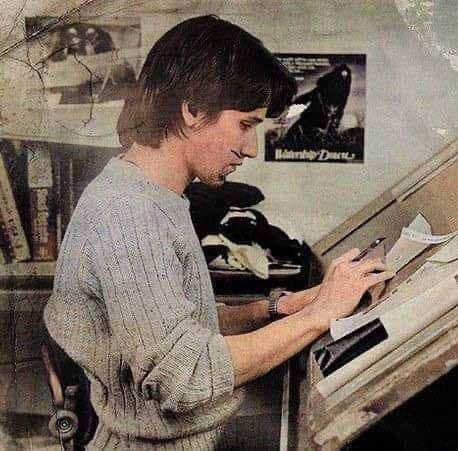
Gabriel Szoke, Spring of 1984 | Photo courtesy of Gabriel Szoke
Around that time, innovation in news media had started to shake things up. CNN pioneered the 24-hour news channel in 1980, expanding the national consciousness of important events. USA Today made the news appealing to a wide-ranging audience through the use of color and graphics, starting in 1982.
It was clear that the Sagamore had a lot of competition.
But Szoke wasn’t interested in the newspaper when he first came to IUPUI. He was interested in activism.
When a series of at least six crimes broke out within the graduate student townhouse complexes in the Spring of 1982, including sexual assault, attempted sexual assault and burglary, he decided to join the Student Assembly, the predecessor to the Undergraduate Student Government.

He campaigned with Stuart Keefer, who eventually became president. They made a point about safety issues on campus, especially at the old Herron building, student housing and the 38th Street Campus.
A year later, Keefer and Szoke co-wrote a “bombshell” report that convinced the IUPUI administration to increase security at the old Herron building.
Keefer was additionally a cartoonist for the Sagamore, which also made a point to investigate safety issues on campus.
Eventually, Szoke’s spirit of activism attracted him to the paper.
Joining the Sagamore
At the time, it was “a very simplistic and linear newspaper,” according to Szoke. “They had a typesetter and a darkroom. It was essentially a big walk-in closet that the photographers shared with people [cartoonists] like me who used the photostat machine to enlarge pictures. It was a low-tech, motley place. Everyone there had a good spirit and was dedicated to journalism.”
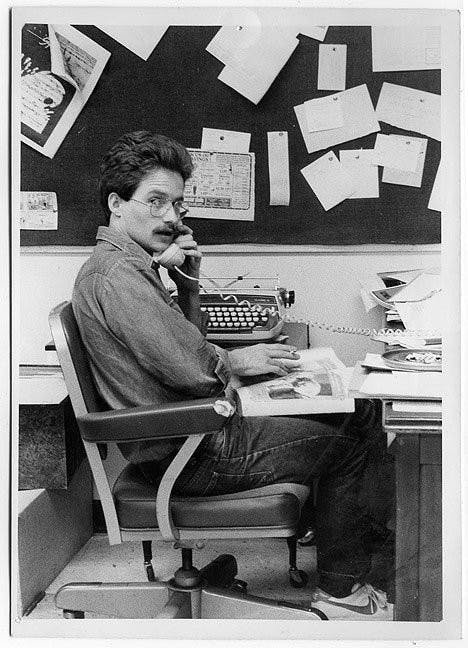
Bill Nolan, multitasking | Photo courtesy of Gabriel Szoke
He quickly grew attached. Both Szoke and Keefer were good friends with the editor-in-chief, Laura Burris, who was also senior editor of IUPUI’s genesis Magazine around that time.
Bill Nolan took over as editor-in-chief after Burris left, around 1983. “He was a great guy, super smart. Older than most,” Szoke said. “But he was a great writer and knew journalism.”
Nolan inherited a "slow-moving boat that continued to get by," according to Szoke, but it eventually became too much for the editorial team. “Bill would often have to edit everything himself and typeset, with one or two people staying up all hours of the night to get everything done.”
Szoke hated to leave, but he had numerous other obligations. He had founded the Herron Student Senate (predecessor to the Herron Student Council) and was still involved with the Student Assembly in addition to having a full course load.
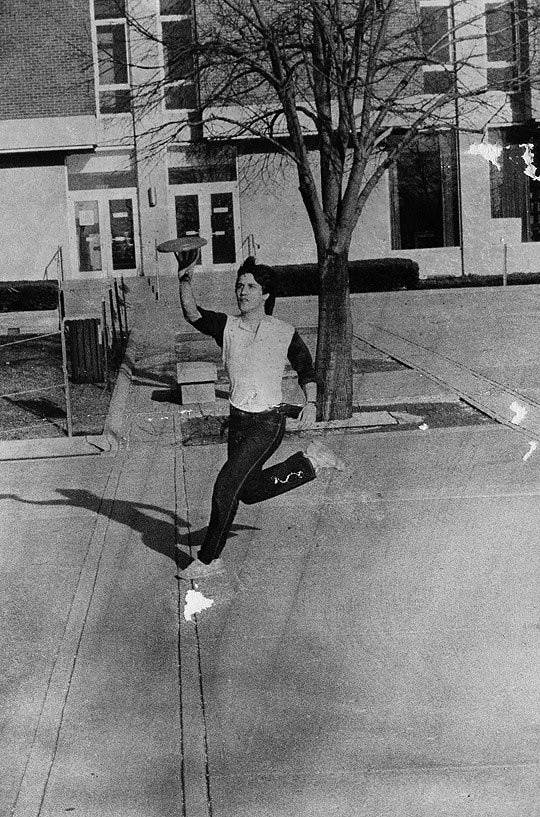
Gabriel Szoke playing frisbee | Photo courtesy of Gabriel Szoke
By the time the fall semester wrapped up, Nolan asked Szoke to come back. He had run into a bit of trouble with the new publisher and faculty advisor, Dr. Douglas Covert, who had threatened to shut the paper down, because of “typos and mistakes… and missing deadlines.”
The Struggle for the Sagamore's Future
“The advertisers were pissed off. They wanted their money back,” said Szoke.
And so Szoke agreed to return, but only if he was made production and design editor. “Everyone had to be on board,” he said. And they were. Szoke reorganized the structure of the paper, shortened deadlines for ad sales, and contributed to the professionalization of the group.
“I understood Covert’s concerns at the beginning. And I tried to do everything I could to help,” Szoke said. “But I think it disappointed him because he wanted the opportunity to push Bill out and get an inside guy to run things more like he wanted.”
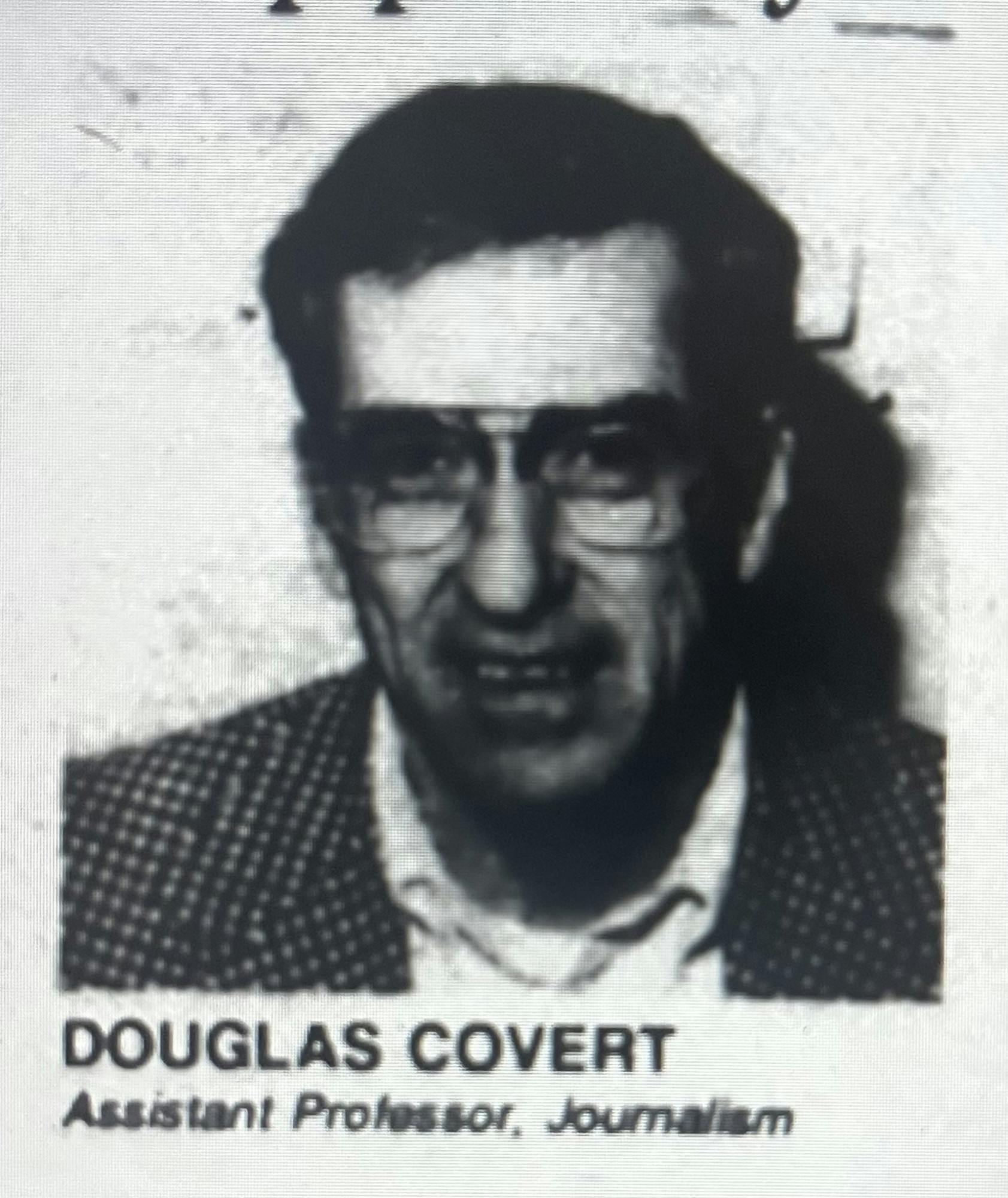
According to Szoke, Covert seemed to favor Michael Thackston, a political science and Spanish major who went on to become a Colonel in the Army.
“He was a red-headed kid that was energetic but a little too gregarious,” Szoke said. “A lot of people had mixed feelings about him because he seemed a bit controlling and into the title.”
Aware of his inexperience, Thackston would write much later to thank “Dr. Caroline Dow who patiently explained all those things I should have learned if I had taken the writing class (or the editing class or the law class).” Dow was a well-liked journalism professor, advisor, and the spouse of Dr. Covert.
“Anyways, I met with Covert at his house to hear his plans for fixing the paper, and how he thought it should be. He had a bad name for Bill, and thought he was inept. But I knew Bill wasn’t a bad person, and didn’t deserve the animosity being directed towards him. And the way that Covert went about it seemed underhanded and dirty. Later, he pounded his fists on the table, and said, ‘if they don’t do it this way, I’m going to shut it down,’”
At that point Szoke realized the gravity of the situation. “I hoped I hadn’t just helped the enemy,” he said.
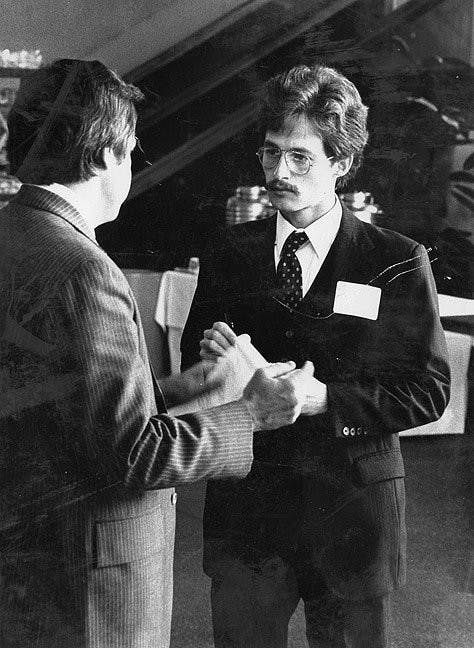
Bill Nolan reporting at an official function | Photo courtesy of Gabriel Szoke
Szoke said he told Nolan about the meeting and both committed to not giving Covert an excuse to shut them down. They still had a lot of work to do to prove they could remain “out of the red.”
“We felt like we were fighting for our lives and that of the paper - it made us stand up for what we believed,” Szoke said.
While it wasn’t a particular story that was censored, the idea that the independent management of the paper could be so easily threatened was scary to these blossoming journalists.
“If Covert was able to shut down the paper, we didn’t know when or how it would reopen. We didn’t know if it would be the genuine voice of the people, or a tool of the University.”
The threat became a major source of motivation for the staff, and their efforts to save the paper bonded them like never before.
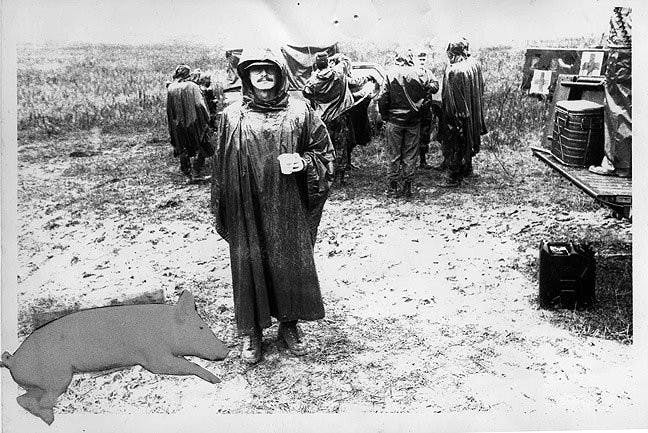
Bill Nolan and other reporters in the rain | Photo courtesy of Gabriel Szoke
“We resented the idea that this venture could be taken away from us, simply because someone was bent on having control… and making a name for himself in academia,” Szoke said. “It really didn’t come down to anything more than that.”
After they reorganized things, Covert still “did not back down,” and the editors had to “justify everything they were doing” to the Student Journalism Publications Board, according to Szoke.
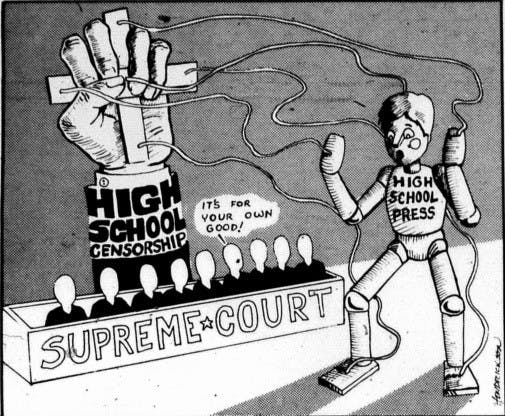
I tied the conversation to other past threats to student free speech, including Hazelwood School District v. Kuhlmeier (1988). This Supreme Court case dealt with a school administration censoring articles about teen pregnancy and divorce in a student publication.
It essentially affirmed their right to censor student publications dealing with any topics to which they disagreed, so long as the paper did not have a history of acting as a “forum for public expression.”
House Bill 1016 (2018) attempted to codify protections for student journalists in Indiana, but it failed four votes shy of the 51 needed.
“The paper was the only voice we had, as students, besides the Student Assembly,” Szoke went on to say. “But it was a good lesson in journalism, because often if there is not a political force leaning on paper, there is financial interest trying to dictate whether something gets played down.”
The Sagamore Staff Celebrates their Victory
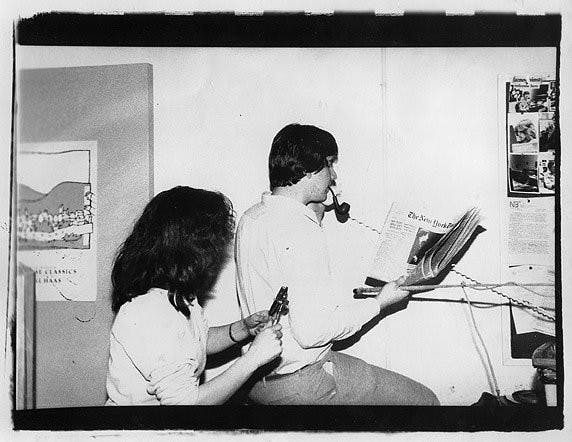
Entertainment Editor David Stafford and Graphic Designer Laura Hildreth | Photo courtesy of Gabriel Szoke
Nevertheless, Szoke and the Sagamore continued on schedule. While there were still many challenges that would lie ahead, it seemed they had gotten themselves out of a precarious situation. The group decided to celebrate their victory.
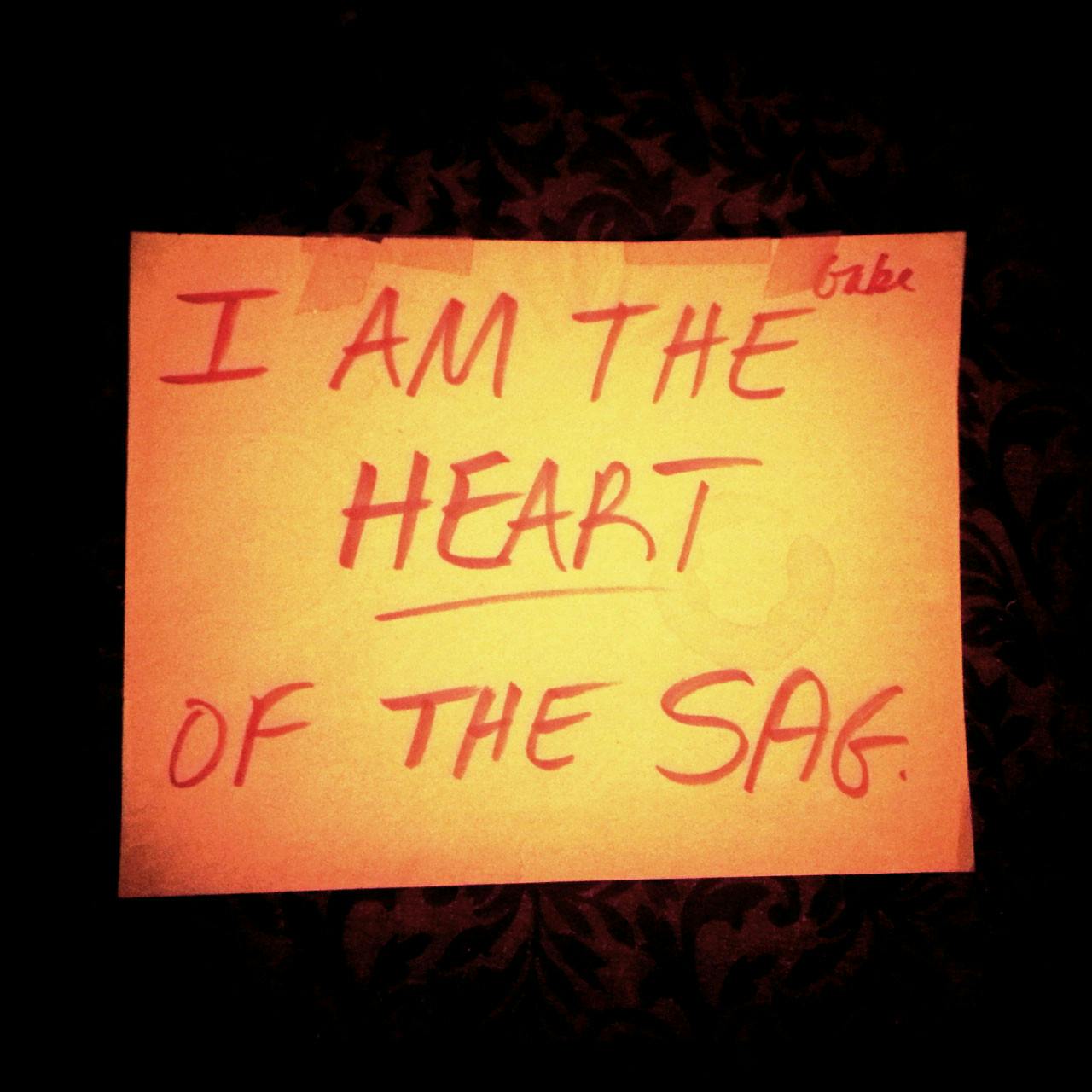
“Jeff was the sales manager, and his parents lived in a real nice house outside of town. We threw a party there. Lynn, the finance manager made us awards. I was ‘the heart of the Sagamore,’ Bill was ‘the brain.’ We also had a dart board with Dr. Covert’s picture on it, which we had plenty of fun with.”
The following year, Thackston ended up taking over the newspaper, despite the fact that some previous staff members disliked him and “could not picture him as boss.”
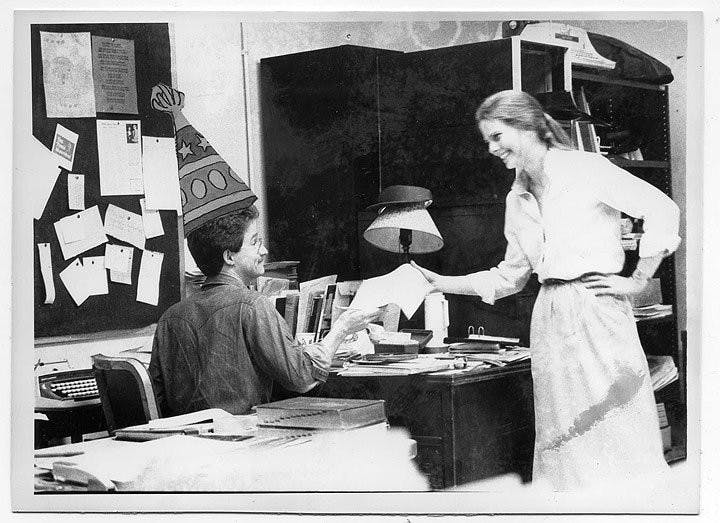
Thackston would later call out the group, saying “at times during the past few years, the editorial staff may have seemed juvenile and irresponsible.”
He had a kinder view of Dr. Covert’s role as publisher, which Szoke said was not surprising.
“A special thanks must go to Dr. Douglas Covert, the acting publisher of the Sagamore for the past 20 months, for staying the late shifts and taking the weekend and evening phone calls, and trying to keep us out of trouble,” Thackston said. Two years later, Dr. Covert would resign and leave for the University of Evansville in St. Augustine, Florida.
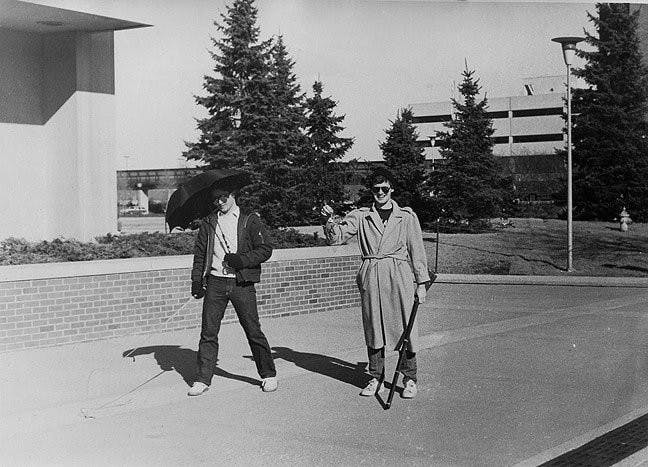
Gabriel Szoke and Michael Thackston "goofing off" on the quad | Photo courtesy of Gabriel Szoke
However, even Thackston emphasized the importance of independence as a student publication in his final editorial as editor-in-chief in the Spring of 1985.
“A student newspaper serves a very real and important function in the university community,” he said. “[to] provide accurate information in a timely and fair fashion. To do this job, the newspaper needs to remain financially solvent, it needs to be credible, it needs to be well designed and written, but most importantly, it must be independent of the university.”
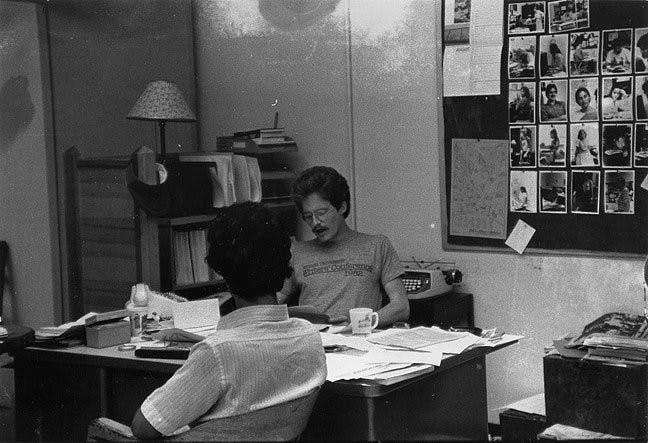
Bill Nolan at his desk in the newsroom with an unidentified staffer | Photo courtesy of Gabriel Szoke
Szoke’s story, and Thackston’s editorial, emphasize the importance of professionalism in writing, editing, and finances. Without it, a newspaper may give those with a distaste for free speech (other than their own) an excuse to take it away.
Regardless, "the struggle for the autonomy of the Sagamore served as an inspiration for future fights against injustice [for all of us]," said Szoke.
Thirty years later, it seemed as though the Sagamore had lost sight of the importance of this perspective in the pursuit of professionalism.
The Sagamore Shuts Down
The official reason why the Sagamore shut down in 2009 was “not getting any students to work for the paper” and “competing with the Indianapolis Star for advertising dollars,” according to the former School of Journalism office manager Jenny Brown.
However, a closer look suggests IUPUI administration had taken an increasingly larger role in the day-to-day affairs of the paper, adding to the already well-established difficulties of local print journalism. The Great Recession certainly didn’t help, either.
Much to the chagrin of its staff, the Sagamore was converted into a class in the early 2000s, around the same time it attempted to transition into online news, according to former writer Peter Luster. Reporters who were previously paid for their work were suddenly forced to pay to participate.
Matthew Stone, a former IUPUI student, said it had become a “rag that basically ran whatever was on the AP/college wire, a few sports articles, and other fluff. Challenge IUPUI's administrators on anything? No way.”
Additionally, the paper begun reprinting a number of articles from other university newspapers, including the Indiana Daily Student.
“How would this present a ‘dynamic’ alternative to a thin paper stuffed with wire copy?” asked former Sagamore editor-in-chief Leslie Lynnton Fuller. “the Sagamore died from a lingering, bureaucratic infection [and] assimilation by the journalism school.”
The Future of Student Journalism
It is clear that the problems that befell the paper were long-standing issues. Like Szoke feared, the Sagamore had become a tool of the University, and that became its death. It was an independent paper that was no longer independent, stuck in an existential crisis of apathy.
“The kids fled because there wasn't a chance to write the news, tell the story, give a raw and vivid review,” explained Fuller. “I feel sorry for all who missed out on the arguments, love, heartbreak, and passion put into a student newspaper that is truly a campus voice.”
While we look to the many decades of great investigative journalism by the Sagamore for inspiration, we also hope to learn from its mistakes.
Since The Campus Citizen picked up the Sagamore’s mantle over a decade ago, we have been dedicated to serving quality media and hard-hitting journalism with a side of perspective. All the while maintaining independence from the IUPUI administration.
And we will continue to do so. Because if we don’t tell the truth, we know others won’t.
That’s why you need an independent student voice at IUPUI.
Jacob Stewart is a junior neuroscience major that has been writing for The Campus Citizen since the Fall of 2021. He recently took on the position of campus editor, and looks forward to seeing the paper grow in the coming years. He also works as a Patient Care Technician, and does freelance writing on the side. Feel free to reach out at stewar1@iu.edu for any questions or feedback about this article. Expect more on the fight for student journalism at IUPUI in the future.

